Home Window Replacement: What Are the Options?
Table of Contents
With so many window styles and options out there, you may be wondering how to choose the right ones for your home. We’ve decided to help make that research a little less daunting by summarizing the most common window styles available, as well as exploring different window materials, parts of a window, choosing a home window replacement company, and new window maintenance.
Common Window Styles
While there are many types of windows to choose from, there are some common window styles that are popular among homeowners. Double hung windows, slider windows, and casement windows are classic styles that look great on any home.
Double Hung Window
Double hung windows are the most common style of window and are used on a variety of home styles, from mid-century modern to more contemporary styles, as well as bungalows, farmhouses and ramblers. They are made up of two large frames (or sashes) that slide up and down on vertical tracks.
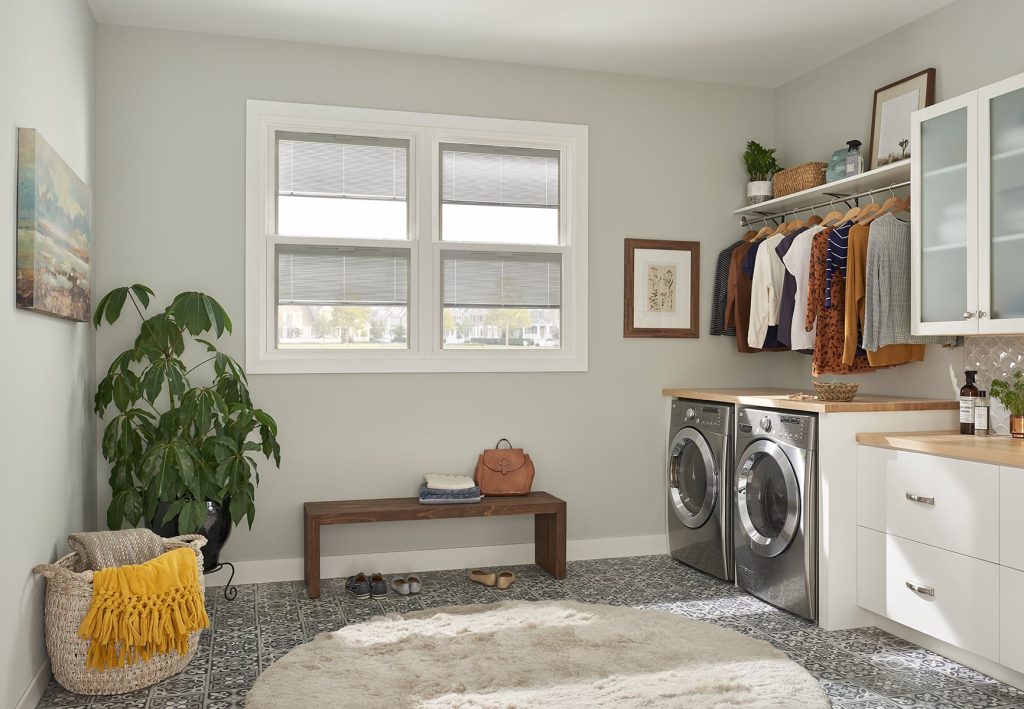
One of the biggest benefits of double hung windows is that they allow great air movement and ventilation. Pulling down the top sash while opening the bottom allows for warmer air to flow out and cooler air to flow in on hot days. Another benefit is that the vertical tracks are less likely to accumulate dirt than other window styles. Double hung windows are also easy to open and close thanks to built-in springs, and prices are relatively reasonable due to their wide selection.
Slider Window
Slider windows are another common style of window found in many mid-century modern and contemporary homes. They are a similar design to double hung windows, but open horizontally along top and bottom tracks as opposed to vertically.
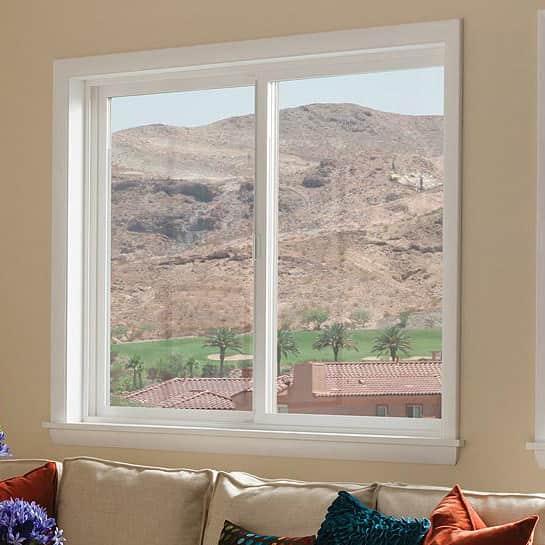
Many slider windows will allow both sashes to slide, while some will have one fixed sash and one that slides open. The simplicity of the design makes slider windows an affordable choice, though the sizes and shapes tend to be more limited than double hung windows.
Casement Window
Casement windows are the next most popular window style after double hung and slider windows. The biggest difference between them is casement windows have a hinged sash that swings open like a door and allows free airflow.

Casement windows work by hand or by turning a crank. The biggest benefit is these windows seal tightly, making them a great option for both security and insulation. The biggest tradeoff is that due to having more hardware, casement windows tend to lack the same durability as double hung and slider windows. Casement windows are most common on contemporary and prairie–style homes.
Other Popular Window Styles
Now that we have identified the most common window styles, let’s highlight some other popular window styles that work great for any home.
Awning Window
Awning windows work like casement windows, using a crank to open and close. However, awning windows are instead fixed at the top of the frame and swing open from the bottom.
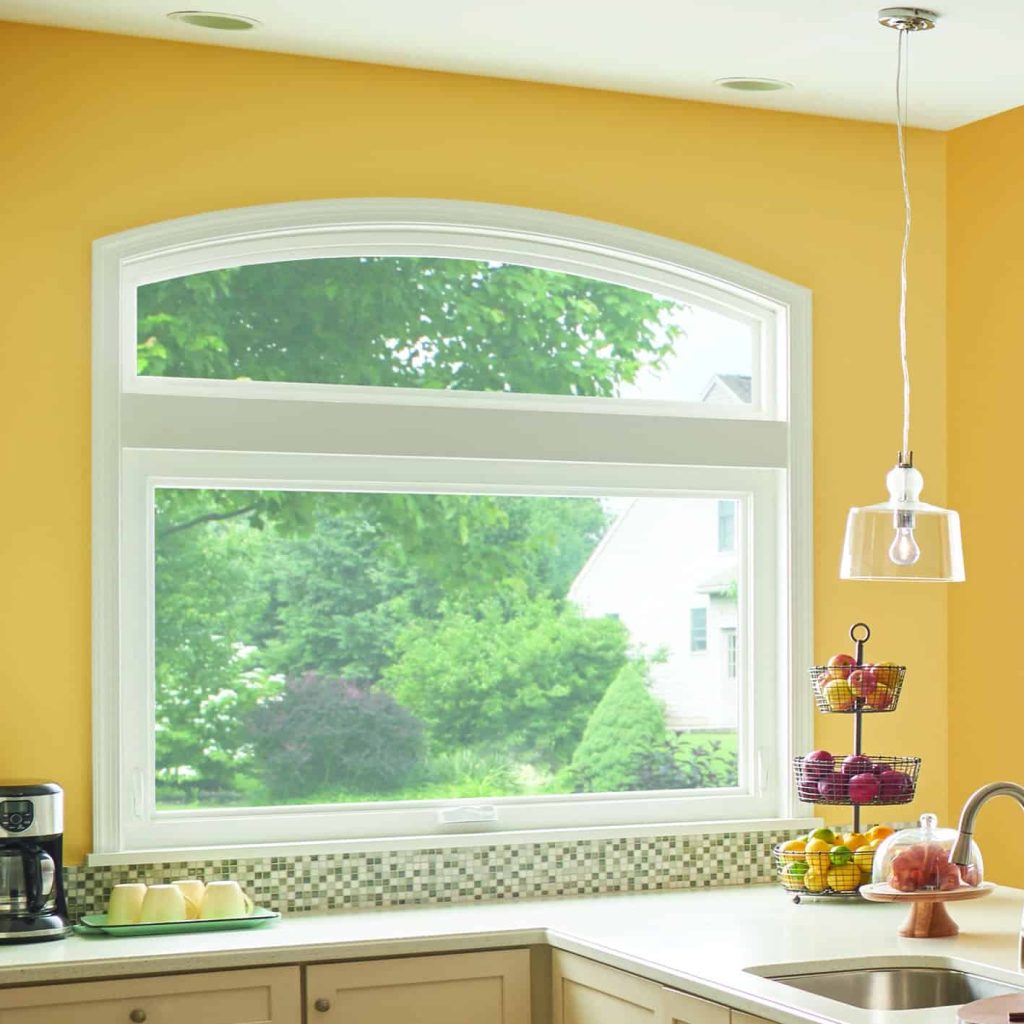
One of the biggest benefits of this style of awning windows is that they protect well against water entering the home when raining and are therefore a great option if you live in a wet climate. The biggest drawback to awning windows is that they do not pull in outside air as effectively as casement windows. Awning windows are most used in low–level homes and basements as they are very secure against intruders.
Hopper Window
Hopper windows fall into the same family as both casement and awning windows, using a crank to open and close. The major difference with a hopper window is that they are instead hinged at the bottom of the frame and open inward.

This is also a good choice for wet climates as they also are effective in keeping out bad weather and offer slightly better airflow than awning windows. Hopper windows are more common on modern style homes but can also look good on traditional styles with the right configuration.
Picture Window
Picture windows are commonly referred to as fixed windows as they are completely fixed to a frame and do not open or close. They are primarily used to supply naturally lighting and views where ventilation is not needed.
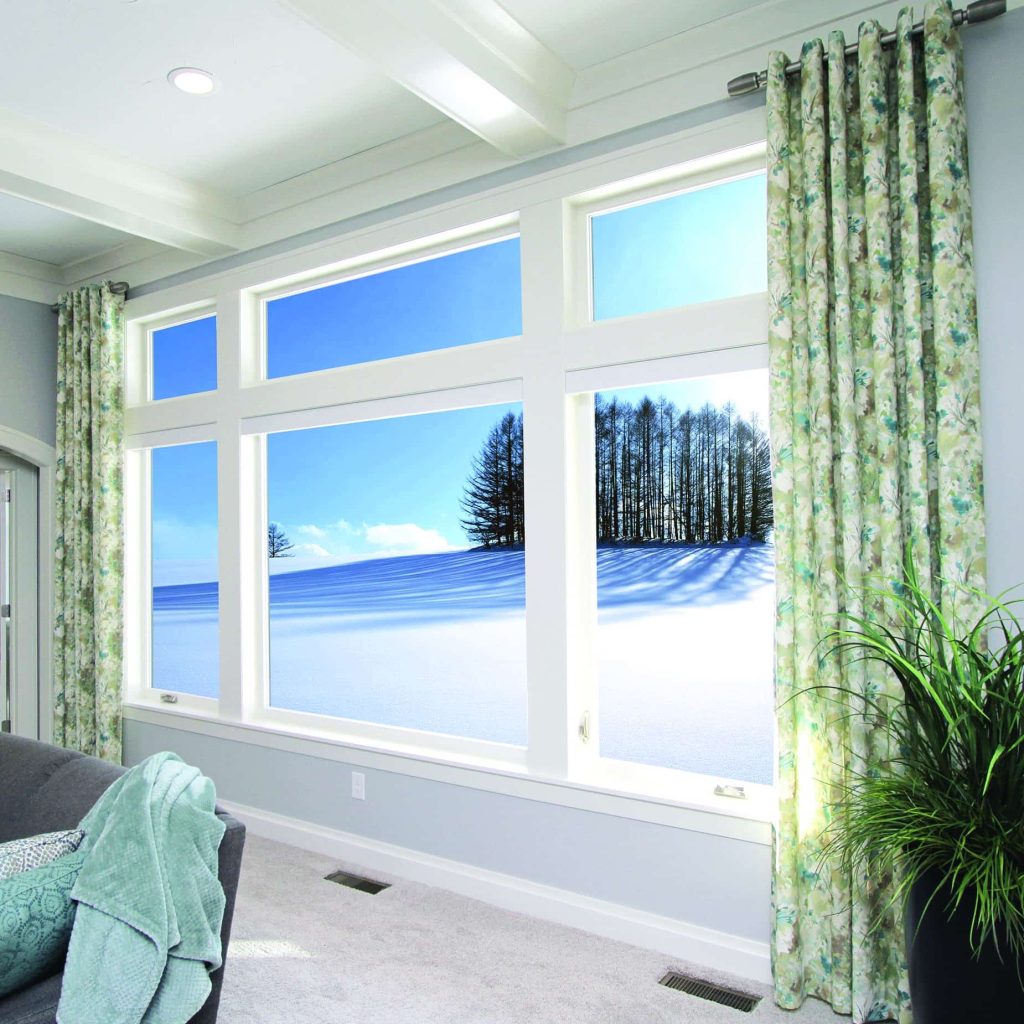
The permanent seal of picture windows makes them one of the best options for insulation and energy savings. They are common in all styles of homes and because of their simplicity, picture windows are also one of the most affordable styles out there.
Bay/Bow Window
Bay or bow windows are a combination of windows that form a large unit typically consisting of a large picture window in the center with double hung or casement windows on either side. The difference between the two is that bay windows offer a more traditional square look, while bow windows are more rounded and modern-looking.

This window style is commonly found on the front of homes and is a visual centerpiece for living rooms and family rooms. They supply a stronger visual aesthetic than other window styles and usually offer seating or shelf space that can be used as a greenhouse for growing and displaying plants. While these styles certainly look great and offer great curb appeal, bay and bow windows are also some of the most expensive options available due to the considerable amount of framing work involved. Because of the large surface area, bay and bow windows are also not as insulating as other styles and are therefore less energy efficient.
Garden Window
Garden windows work as a smaller scale version of a bay window, protruding slightly outward from the side of the home. Unlike a bay window, however, these windows are typically found in the kitchen above counters or the sink.
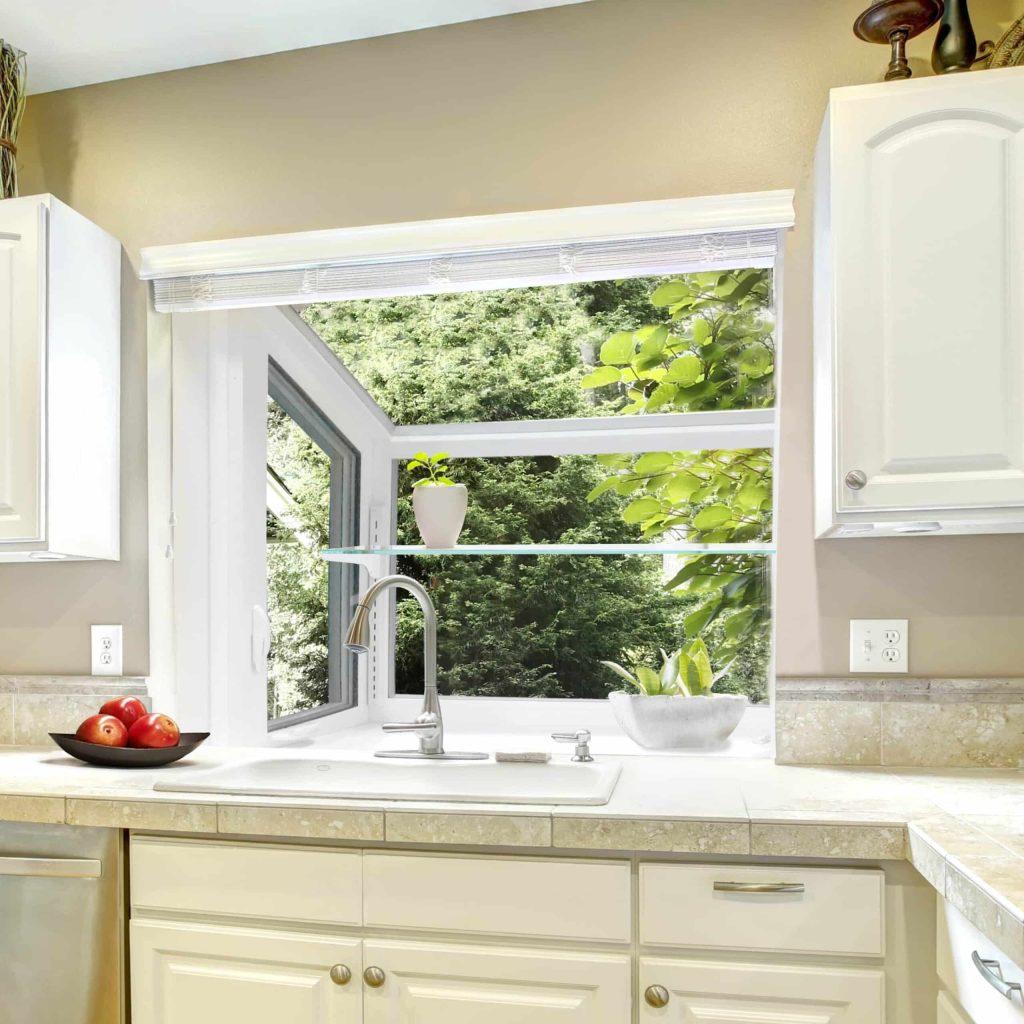
Garden windows supply more natural lighting that other window styles, and most have side panels that can open and close to allow ventilation. Like bay and bow windows, garden windows can also function as a mini greenhouse for plants and herbs. Due to the smaller size, garden windows are more energy efficient than bow and bay windows but tend to be more expensive than more traditional window styles of the same size.
DIFFERENT WINDOW MATERIALS
Windows can be built out of many different materials like wood, fiberglass, aluminum, and vinyl. There are pros and cons to each of these as windows and the ultimate decision should be based on your needs and preferences.
Wood Windows
Wooden windows are a classic style used in many homes. Wood is a relatively sturdy material, but can often cause problems in areas with lots of rain and/or moisture.
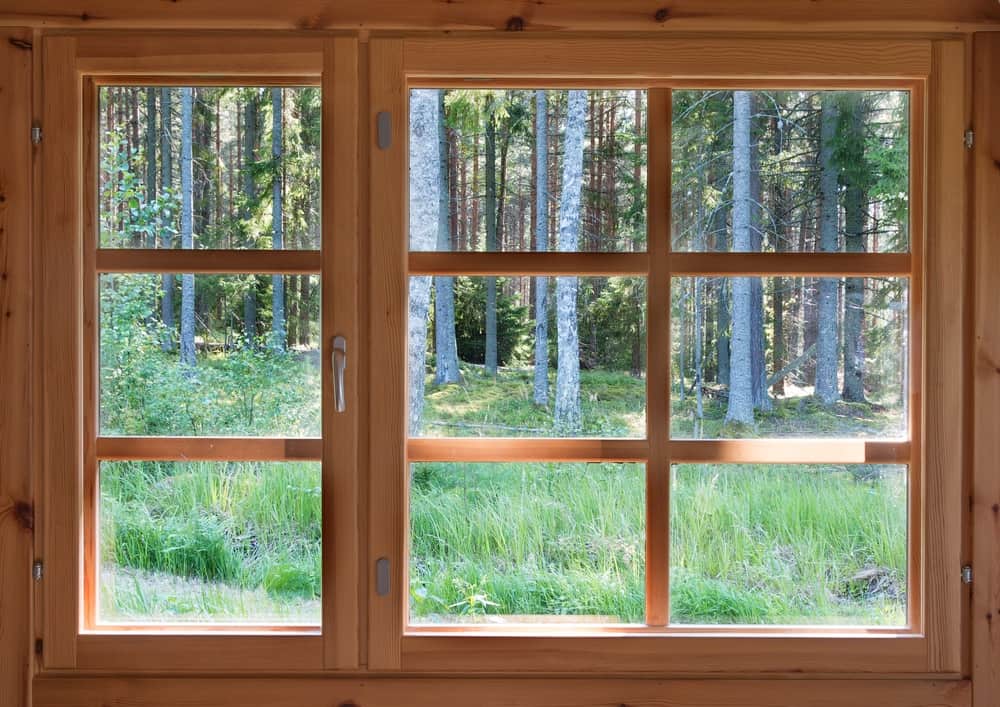
It is vulnerable to cracks and warping by nature, so weather tends to speed up these imperfections. While wood might be your first option for windows, we encourage you to explore different materials that may last you longer.
Fiberglass Windows
Fiberglass windows are durable and provide optimal energy efficiency. Fiberglass windows are a popular choice despite being expensive due to their high quality and long-lasting performance.

They can withstand extreme weather conditions, resist warping, and maintain their structural integrity over time.
Aluminum Windows
Aluminum windows are known for being both paintable and durable, offering homeowners the option to customize their appearance.

However, they tend to have poor energy efficiency compared to other window materials and might not be the best option for long-lasting performance.
Vinyl Windows
Vinyl windows are known for their durability and affordability, offering homeowners a cost-effective solution. They also provide excellent energy efficiency, helping to reduce utility costs.
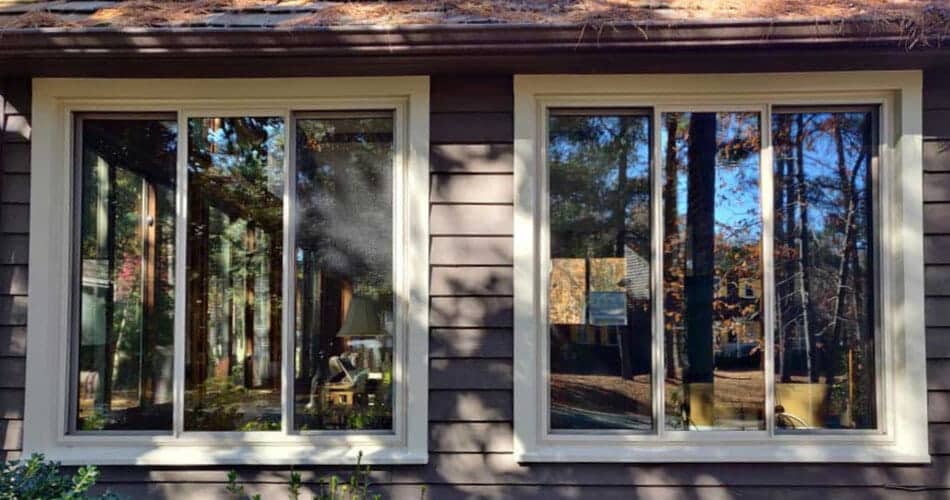
However, it’s important to note that vinyl windows are not paintable. But even so, you can buy vinyl windows in an array of colors, so choosing the color you want shouldn’t be an issue.
THE PARTS OF A WINDOW
Knowing the different parts of a window can be helpful in the buying process as you’re picking which windows are right for your home. Different parts of a window serve different purposes that can increase energy efficiency, security, and ultimately the amount of natural light your home gets. Using a common double hung window, let’s identify its anatomy:
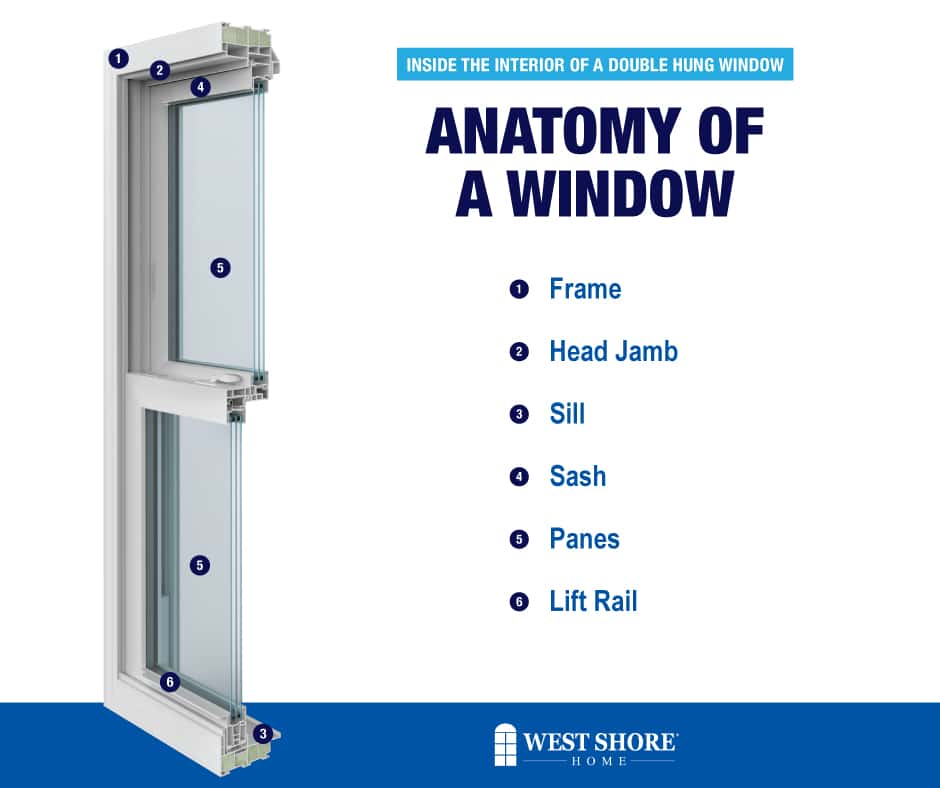
- Frame: Holds the window pieces together, consisting of the jambs and the sill.
- Head Jamb: The horizontal piece of the frame located at the top.
- Sill: The horizontal piece of the frame located at the bottom on the exterior of the window.
- Sash: Holds the pane(s) of glass in place. In single-hung and double-hung windows, the sash moves to open and close the window. The window has an upper and lower sash. In casement windows, there is one sash that swings out.
- Panes: Each sash may consist of one or more panes of glass called lights or lites. If there is just one single pane of glass in each sash, the glass pattern is one over one. If there are two lites in each sash, the pattern is two over two.
- Lift Rail: A handle, or the like, secured to a sliding sash (usually the lower rail) to assist in raising or lowering it.
A Variety of Window Styles to Compliment Your Home
Now that you’ve had the opportunity to learn about the different styles of windows available, the next step is to decide which ones are right for you. Once you’ve decided, you’ll be ready to contact your local window company or contractor to schedule an estimate.
At West Shore Home, our design consultants will work closely with you to design a great new look for your home while supplying a seamless window installation process. Schedule your own window appointment today.




